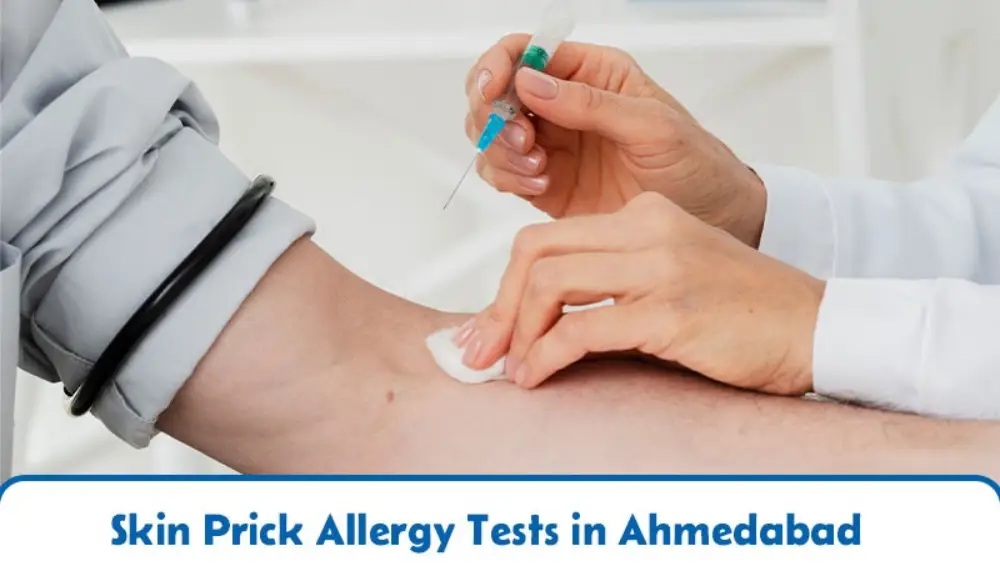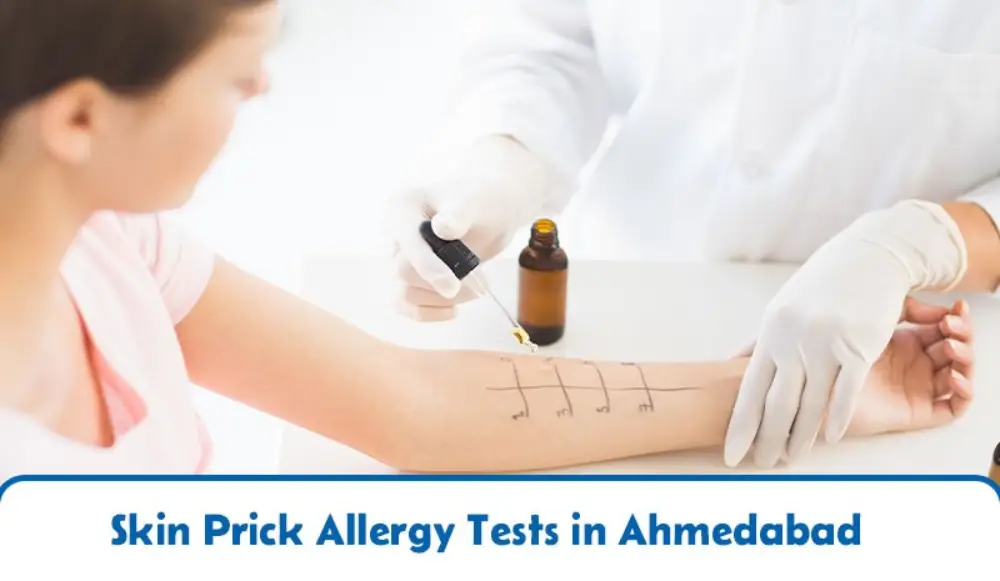Do you feel allergy symptoms such as unexplained sneezing, rashes, or other related allergic reactions? A skin prick allergy test may be the solution. The tests are an accurate and uncomplicated way of diagnosing allergies among Ahmedabad residents, pointing towards effective treatment. How skin prick tests work, and their advantages, we will discuss in the article below.
Understanding Skin Prick Allergy Tests
A skin prick allergy test is a diagnostic tool used to identify specific allergens causing your symptoms. During the test, small amounts of potential allergens are introduced into your skin using tiny pricks or scratches. If you’re allergic to any substance, the area will develop a small red bump, much like a mosquito bite.
How the Test is Performed
- Clean the skin of your forearm or your back.
- A drop of each allergen solution is put on.
- A clean lancet is used prudently to prick a piece of the skin across the solution.
- Reactions are then observed after 15-20 minutes.
Common Allergens Tested
- Pollen
- Dust mites
- Pet dander
- Molds
- Foodstuffs like nuts, shellfish, or milk
- Insect venom
Why Skin Prick Tests for Allergies Diagnosis?
Advantages of Skin Prick Test
- No invasive: The test can be conducted with minimal discomfort and involves no injections.
- Rapid Results: Tests are usually ready within 15-20 minutes.
- Accurate allergen identification: It identifies specific allergens causing your symptoms
- Cost-Effective: Skin Prick Tests are cheaper in comparison to blood tests.
Who should get tested?
If you often have cases of:
- Chronic sneezing or nasal obstruction
- Itchy skin with unexplained rashes on the skin
- Swelling after some food consumptions.
- Reactions to insect bites. Then, a skin prick test might be the next step to uncover the triggers and manage your condition effectively.
What to Expect During the Test
Preparation Before the Test
- Avoid antihistamines for 5-7 days before the test, as they may interfere with results.
- Inform your doctor about any ongoing medications.
- Wear comfortable clothing to allow easy access to your forearm or back.
Step-by-Step Procedure
- The allergist will review your medical history.
- The test area will be prepared, and allergen solutions will be applied.
- Skin pricks are made with sterile lancets to introduce the allergen.
- The allergist looks for reactions such as redness or swelling.
- Interpretation of Results
- Positive Reaction: Indicates sensitivity to the allergen, as indicated by a red, raised bump.
- Negative Reaction: Demonstrates no sensitivity to the substance.
- Your allergist will take the time to explain the results and outline next steps.
Managing Allergies After Diagnosis
Available Therapies
- Medications: Antihistamines, nasal sprays, or topical creams
- Immune therapy: Allergy shots and tablets in the long run
- Emergency Care: Prescription of EpiPens for severe allergic reactions
- Lifestyle Changes
- Air purifiers help to decrease one’s exposure to dust and pollen.
- Bedding should be washed often to reduce the accumulation of dust mites.
- Try to avoid trigger foods and read food labels carefully.
When to Consult an Allergist
If your symptoms do not improve after treatment or are severe, see an allergist to discuss other treatment alternatives.
 +919979891672
+919979891672 












No Comments